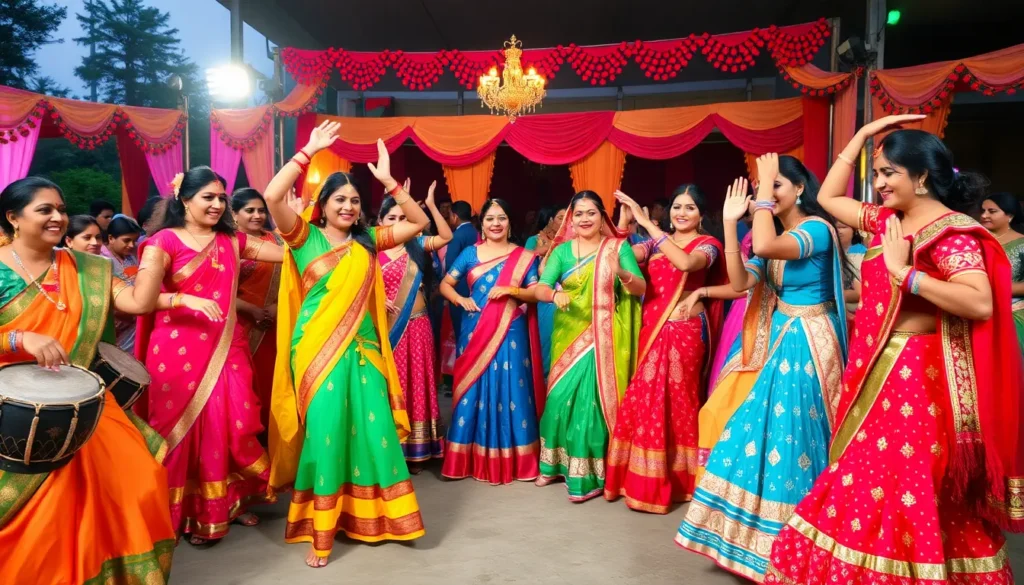In the vibrant tapestry of Indian culture, “jharaahar” stands out like a quirky dance move at a wedding. This fascinating term encapsulates a rich tradition that’s as colorful as it is meaningful. Whether you’re a curious traveler, a culture enthusiast, or just someone looking to spice up your dinner conversation, understanding jharaahar will have you impressing friends and family in no time.
Table of Contents
ToggleOverview of Jharaahar
Jharaahar represents a colorful tradition integral to Indian culture. Participants engage in this vibrant celebration by expressing joy through music and dance. Traditionally linked to weddings, jharaahar showcases unique movements and lively rhythms. Observers often note the infectious energy emanating from dancers, captivating everyone present.
Emphasis on community plays a central role in jharaahar, promoting togetherness among friends and family. The dance fosters a sense of belonging while encouraging participants to express their individual styles. Local musicians frequently accompany the performance, providing a dynamic soundtrack that elevates the experience.
Various regions in India interpret jharaahar distinctively, infusing local flavors into the dance. Cultural influences shape its expressions, leading to diverse styles across states. For example, some areas incorporate folk elements, while others blend contemporary moves with traditional steps.
Costumes also hold significance during jharaahar events. Brightly colored outfits reflect the jubilant atmosphere, enhancing visual appeal. Attire often represents regional heritage, adding a deeper layer to the cultural experience.
As jharaahar continues to gain recognition, its influence spreads beyond Indian borders. International audiences are increasingly drawn to the lively spectacle, fostering cross-cultural exchange. Engaging with jharaahar offers an immersive glimpse into the rich tapestry of Indian traditions, making it a fascinating topic for enthusiasts and travelers alike.
Historical Significance

Jharaahar holds deep historical roots in Indian tradition, illustrating its importance as a celebration of joy and community.
Origins of Jharaahar
The origins of jharaahar trace back to various cultural practices across India. Several regions claim unique beginnings, often linked to wedding festivities and harvest celebrations. Folk tales frequently highlight jharaahar as a joyous expression of gratitude for blessings. Regional variations contribute to its evolving nature, with each community imparting distinct styles and rhythms. Traditional instruments, such as dhol and nagada, enhance the dance, creating a festive atmosphere. Throughout centuries, jharaahar transformed, yet its essence as a communal celebration remained intact.
Cultural Impact
Culturally, jharaahar significantly influences regional customs and practices. It serves as a unifying force, bringing together diverse populations during festivals and weddings. Local art forms, music, and costumes intertwine, showcasing regional identity to onlookers. Community participation fosters connections among generations, ensuring the tradition endures. As jharaahar gains global recognition, it contributes to cross-cultural understanding and appreciation for Indian heritage. International interest also encourages fusion with contemporary dance styles, reflecting its adaptability and relevance in today’s world.
Characteristics of Jharaahar
Jharaahar embodies vibrant cultural expressions through its captivating characteristics. This lively tradition showcases distinct aspects, enhancing its significance in celebration.
Physical Features
Colorful costumes define jharaahar, with participants adorning bright fabrics representing regional heritage. Participants often wear intricate jewelry, adding to the visual appeal of the dance. Movements in jharaahar are energetic and rhythmic, reflecting the joy inherent in each celebration. Performers frequently use homemade props like handkerchiefs and sticks, integrating playful elements into the dance. Regional variations appear in the interpretation of movements and outfits, showcasing diverse styles across India. The presence of traditional instruments, such as dhol and nagada, amplifies the festive atmosphere, creating an engaging sensory experience.
Unique Qualities
Jharaahar stands out for its infectious energy that captivates both performers and observers. This tradition emphasizes community bonding, as participants often dance in groups, fostering togetherness among friends and family. Evolving with each interpretation, jharaahar adapts to modern sensibilities while retaining its cultural essence. The dance illustrates gratitude and celebration, reflecting a deep connection to heritage. Local adaptations frequently add unique rhythms and styles, enhancing the dance’s charm. Jharaahar also promotes cross-cultural appreciation, serving as a bridge between traditional practices and contemporary expressions.
Uses and Applications
Jharaahar finds expression in various festive contexts, deeply woven into India’s cultural fabric. This vibrant tradition serves both as entertainment and a way to connect with community.
Traditional Uses
Jharaahar primarily appears during weddings and religious festivals. Dancers often perform with traditional instruments like dhol and nagada, creating a lively atmosphere. Participants don colorful costumes, reflecting regional identity and heritage. Folk tales frequently portray jharaahar as a joyful expression of gratitude during harvest celebrations. Celebratory gatherings harness its energy, fostering unity among friends and family. Each region incorporates distinct styles, enriching the overall diversity of this cultural expression. Observers appreciate the spirited movements that echo the joy of ancient traditions.
Modern Adaptations
In contemporary settings, jharaahar adapts to reflect modern sensibilities. Dance troupes sometimes fuse traditional elements with contemporary styles, attracting broader audiences. Festivals and cultural events often showcase innovative interpretations, highlighting the versatility of jharaahar. Modern choreographers experiment with different music genres, expanding its reach. These adaptations encourage participants of all ages to join in, promoting inclusivity and engagement. Social media platforms amplify its visibility, allowing for widespread cultural exchange. As a result, jharaahar transcends its origins, evolving into a global celebration of joy and community.
Jharaahar embodies the spirit of celebration and community in Indian culture. Its vibrant dance moves and colorful costumes create an inviting atmosphere that brings people together. As it evolves, jharaahar continues to reflect regional diversity while adapting to modern influences. This lively tradition not only entertains but also strengthens connections among generations, making it a cherished part of weddings and festivals. By embracing jharaahar, individuals can experience the joy and unity it fosters, ensuring this cultural gem remains alive for future generations to enjoy.





